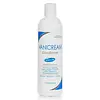What's inside
What's inside
 Key Ingredients
Key Ingredients

No key ingredients
 Benefits
Benefits

 Concerns
Concerns

 Ingredients Side-by-side
Ingredients Side-by-side

Lactobacillus/Arundinaria Gigantea Ferment Filtrate
Skin ConditioningCetearyl Alcohol
EmollientGlycerin
HumectantLactobacillus Ferment
Skin ConditioningBehenamidopropyl Dimethylamine
EmulsifyingSalvia Hispanica Seed Extract
EmollientPrunus Armeniaca Kernel Oil
MaskingCoconut Alkanes
EmollientCitric Acid
BufferingCocos Nucifera Fruit Extract
EmollientSqualane
EmollientPisum Sativum Peptide
Skin ConditioningArtocarpus Heterophyllus Fruit Extract
Skin ConditioningCitrus Aurantium Dulcis Fruit Extract
MaskingCitrus Limon Fruit Extract
MaskingMentha Piperita Leaf Extract
Skin ConditioningSaccharum Officinarum Extract
MoisturisingZingiber Officinale Root Extract
MaskingHelianthus Annuus Seed Oil
EmollientEuterpe Oleracea Sterols
Skin ConditioningChenopodium Quinoa Seed Extract
Skin ConditioningHydrolyzed Cicer Seed Extract
Skin ProtectingLens Esculenta Seed Extract
Skin ProtectingChlorella Vulgaris Extract
Skin ConditioningOlea Europaea Leaf Extract
PerfumingBambusa Vulgaris Extract
Skin ConditioningSaccharomyces/Copper Ferment
Skin ConditioningSaccharomyces/Iron Ferment
Skin ConditioningSaccharomyces/Magnesium Ferment
Saccharomyces/Zinc Ferment
Skin ConditioningPyrus Malus Fruit Extract
Skin ConditioningCamellia Sinensis Leaf Extract
AntimicrobialHexapeptide-11
Skin ConditioningLinoleic Acid
CleansingOleic Acid
EmollientLinolenic Acid
CleansingCoco-Caprylate/Caprate
EmollientBetaine
HumectantParfum
MaskingLinalool
PerfumingLimonene
PerfumingLactobacillus/Arundinaria Gigantea Ferment Filtrate, Cetearyl Alcohol, Glycerin, Lactobacillus Ferment, Behenamidopropyl Dimethylamine, Salvia Hispanica Seed Extract, Prunus Armeniaca Kernel Oil, Coconut Alkanes, Citric Acid, Cocos Nucifera Fruit Extract, Squalane, Pisum Sativum Peptide, Artocarpus Heterophyllus Fruit Extract, Citrus Aurantium Dulcis Fruit Extract, Citrus Limon Fruit Extract, Mentha Piperita Leaf Extract, Saccharum Officinarum Extract, Zingiber Officinale Root Extract, Helianthus Annuus Seed Oil, Euterpe Oleracea Sterols, Chenopodium Quinoa Seed Extract, Hydrolyzed Cicer Seed Extract, Lens Esculenta Seed Extract, Chlorella Vulgaris Extract, Olea Europaea Leaf Extract, Bambusa Vulgaris Extract, Saccharomyces/Copper Ferment, Saccharomyces/Iron Ferment, Saccharomyces/Magnesium Ferment, Saccharomyces/Zinc Ferment, Pyrus Malus Fruit Extract, Camellia Sinensis Leaf Extract, Hexapeptide-11, Linoleic Acid, Oleic Acid, Linolenic Acid, Coco-Caprylate/Caprate, Betaine, Parfum, Linalool, Limonene
Alternatives
Ingredients Explained
These ingredients are found in both products.
Ingredients higher up in an ingredient list are typically present in a larger amount.
Cetearyl alcohol is a mixture of two fatty alcohols: cetyl alcohol and stearyl alcohol. It is mainly used as an emulsifier. Emulsifiers help prevent the separation of oils and products. Due to its composition, it can also be used to thicken a product or help create foam.
Cetearyl alcohol is an emollient. Emollients help soothe and hydrate the skin by trapping moisture.
Studies show Cetearyl alcohol is non-toxic and non-irritating. The FDA allows products labeled "alcohol-free" to have fatty alcohols.
This ingredient is usually derived from plant oils such as palm, vegetable, or coconut oils. There is debate on whether this ingredient will cause acne.
Due to the fatty acid base, this ingredient may not be Malassezia folliculitis safe.
Learn more about Cetearyl AlcoholGlycerin is already naturally found in your skin. It helps moisturize and protect your skin.
A study from 2016 found glycerin to be more effective as a humectant than AHAs and hyaluronic acid.
As a humectant, it helps the skin stay hydrated by pulling moisture to your skin. The low molecular weight of glycerin allows it to pull moisture into the deeper layers of your skin.
Hydrated skin improves your skin barrier; Your skin barrier helps protect against irritants and bacteria.
Glycerin has also been found to have antimicrobial and antiviral properties. Due to these properties, glycerin is often used in wound and burn treatments.
In cosmetics, glycerin is usually derived from plants such as soybean or palm. However, it can also be sourced from animals, such as tallow or animal fat.
This ingredient is organic, colorless, odorless, and non-toxic.
Glycerin is the name for this ingredient in American English. British English uses Glycerol/Glycerine.
Learn more about Glycerin